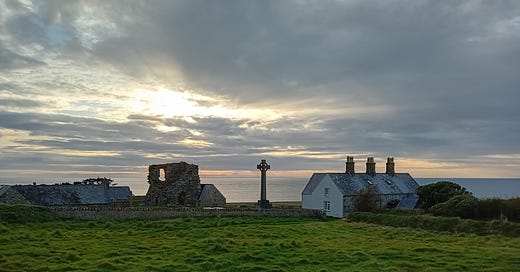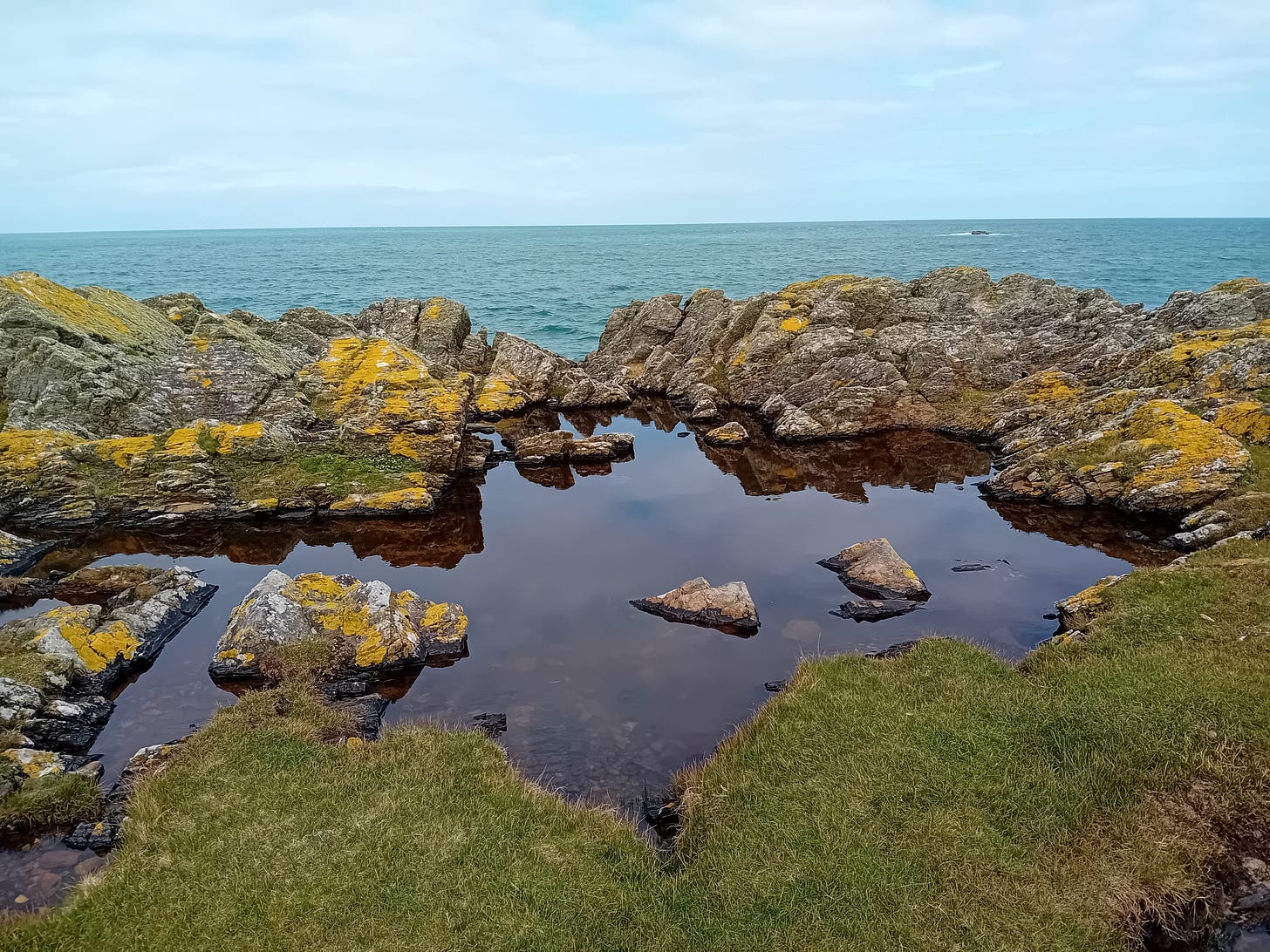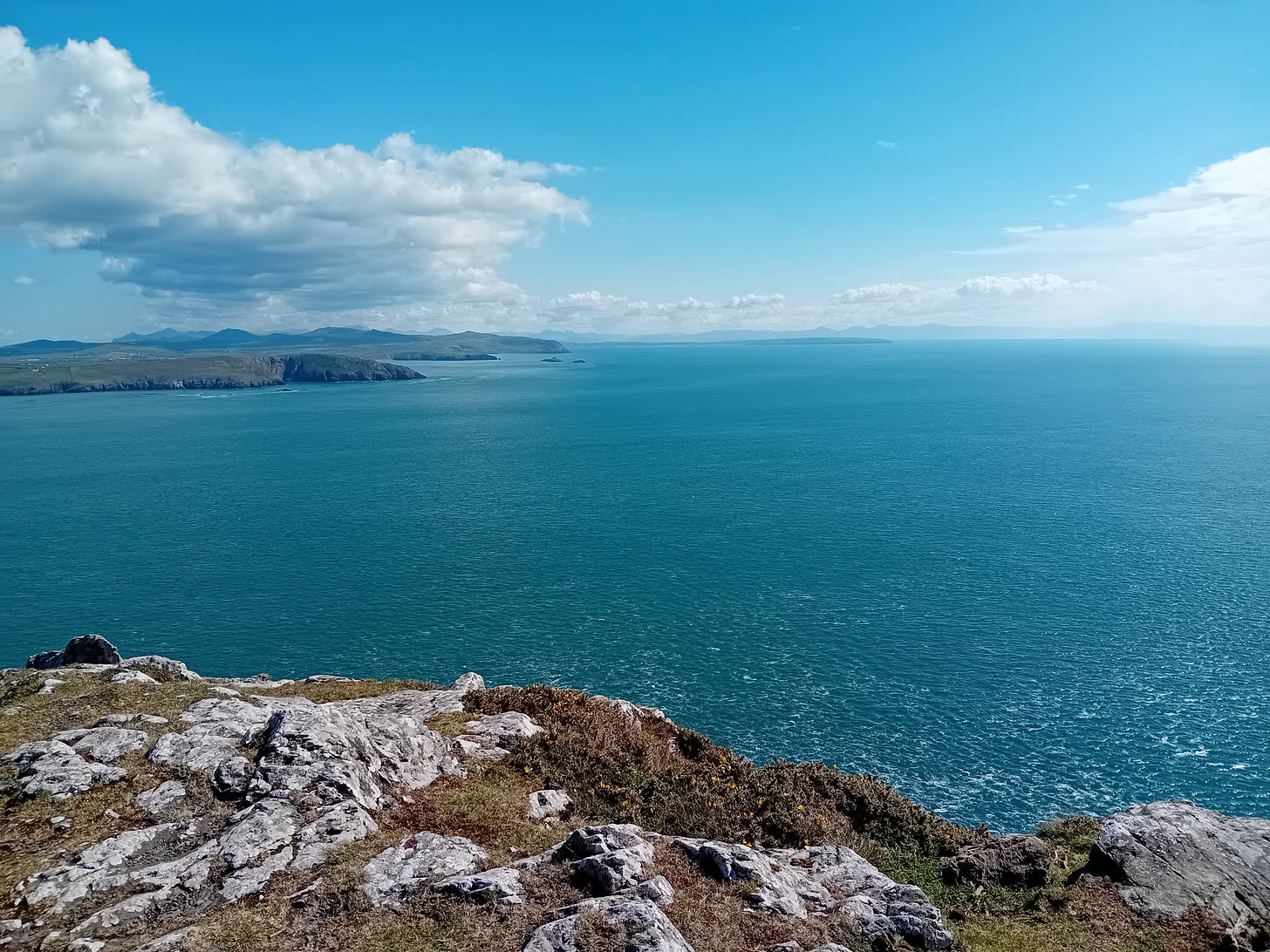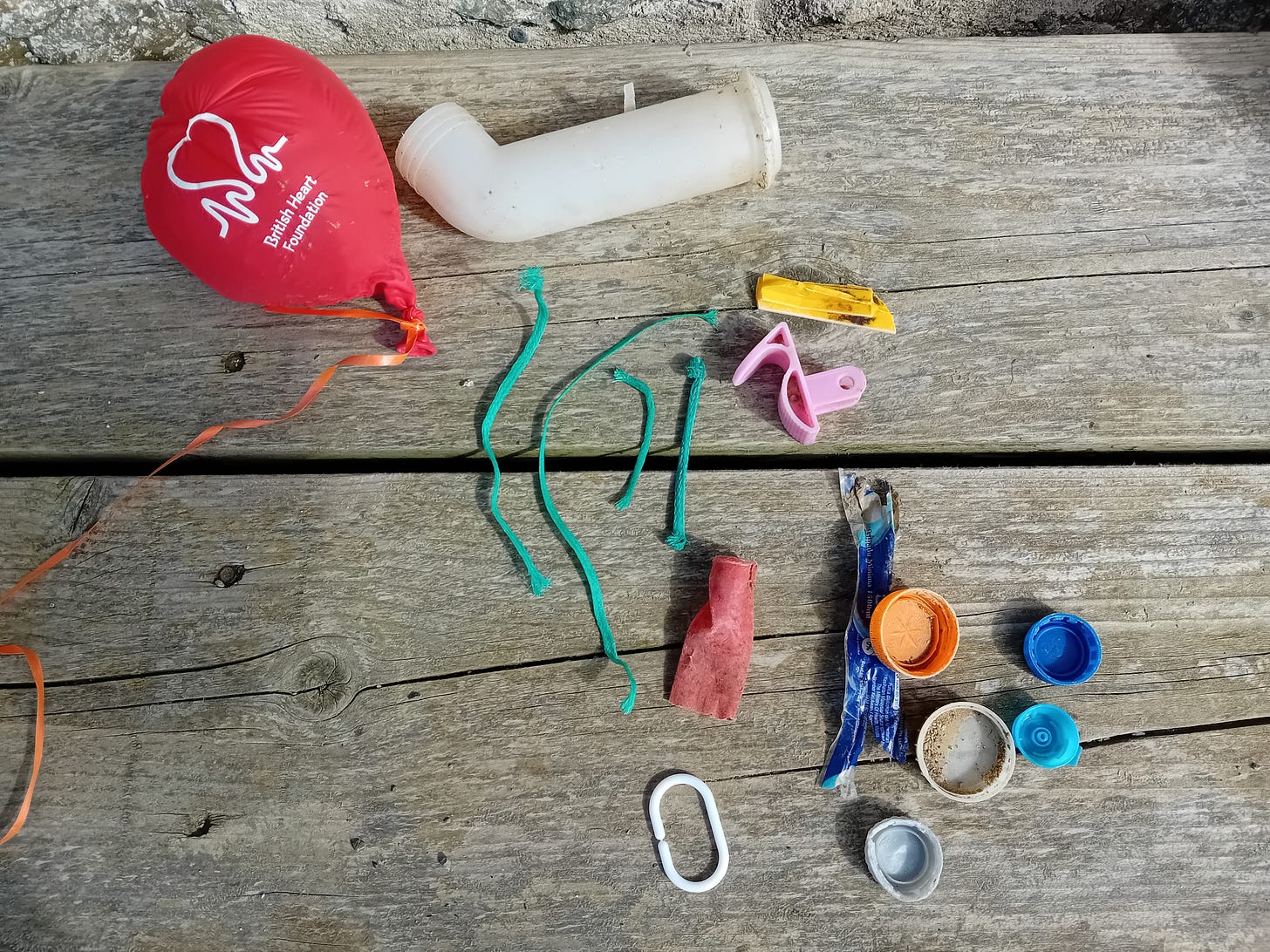At 4am a faint line on the horizon is the only hint of the coming day but the pale-coloured surface makes the track easy to follow and I turn my torch off so I can enjoy the darkness. The night air is filled with the cries of Manx Shearwaters calling out from their underground burrows. It’s a sound I’ve become familiar with since I arrived on Ynys Enlli (Bardey Island) a few days ago, but it still feels slightly disconcerting, as though I am surrounded by people quietly trying to choke back sobs.
Manx Shearwaters return to land under the cover of darkness in an attempt to avoid the Black-backed gulls who would attack them given half a chance, and tonight with the moon shrouded in cloud, there are lots of Manxies about. The returning birds arrive so suddenly and silently that I find it hard to catch a glimpse of them but occasionally I hear the whirring of wings in rapid motion as one passes me and once one flies so close by it almost touches my head.
It’s not just the Manxies that have me out of bed at this hour so after a while I walk on down the track. As their cries fade into the distance, I hear a very different sound – a repeated ‘crek-crek, crek-crek’ like an endless slightly stuttering engaged tone on a telephone - the distinctive call of a Corncrake. It’s just one bird - a recent and unexpected arrival on the island - but it calls continuously, and I stand there in the darkness for five minutes or more, just listening as I know there’s little chance of seeing this shy and secretive creature. When I reluctantly head back to bed, the Corncrake’s call follows me a short way up the track as though somewhere in the adjoining field it is keeping pace with me, but when I get closer to the area where Manxies nest and their cries grow louder, the sound is lost.
I’ve wanted to hear a Corncrake since reading Kathleen Jamie’s essay ‘Crex-Crex’ in which she visits the Scottish island of Coll to search for them. Until the middle of the 20th century, Corncrakes could be found across much of the British Isles during the summer months when they migrated here to breed. Then changes in agricultural practices, and particularly the loss of meadow habitats, led to sharp declines in their numbers and the few remaining populations are mainly in Scotland and Ireland so it’s rare to find one in Wales. This one had arrived on Ynys Enlli a couple of weeks before us, the first to be recorded here since 2018 – a lone male, calling out through the night for the partner that might never arrive.
Ynys Enlli is a small island, two miles off the end of the Llŷn Peninsula, and the furthest point west in North Wales. It’s known in English as Bardsey Island, but the Welsh name means Island in the Tides, and it is those tides, and the often-turbulent waters of the Swnt (Bardsey Sound) which separates Enlli from the Llŷn which give the island its sense of remoteness from the mainland despite it being only a 20-minute boat ride away. The boat can only cross when both weather and tide conditions are favourable, and the island can sometimes be cut-off for weeks at a time during the winter. My visit was during April in a week when the sun shone every day and the wind was mostly gentle, so I didn’t experience what it feels like to be here when the place is battered by storms.
I visited Enlli for a writing course organised by Ty Newydd, the National Writing Centre for Wales. It was the first time they’d held a course on Enlli and I very much hope they run similar courses in future because it was an amazing experience. As well as workshops and writing exercises with two excellent tutors, Elinor Gwynn and Jon Gower, there were various other walks and talks arranged to introduce us to the island’s natural and human history and some of its current residents. We also had lots of time to focus on our writing and to explore the island, and its wildlife, at our own pace. You can read more about some of the other species I encountered on my walks around Enlli here.
I’d read something of the island’s history before I arrived, but I learnt lots more of it while I was there. This is a landscape filled with stories from its past, not only of the 20,000 saints reputedly buried there but of the farmers, fishers, pirates, artists and others who have tried, and sometimes failed, to make a living from this tiny patch of land. There are stories of other species too, such as the rabbits who thrived here before they were completely wiped out by a virus in the 1990s and whose former burrows have been repurposed as Manxie nesting holes. The saddest story of all is that of the birds – Willow Warblers, Redwings, Whimbrels and many more species - who once died here in their thousands, smashing into the side of the lighthouse after being attracted to its dazzling white beam on dark, stormy nights. But at least this story has a happy ending as the lighthouse has now been fitted with a red light and birds are no longer wounded and killed in the interests of keeping sailors safe.
Storms still batter the island though and as the climate changes and the storms increase in ferocity the speed at which they are eroding parts of the island’s shoreline is also increasing. There is other evidence too that even a place so seemingly removed from modern life cannot avoid the harm humanity is creating. On a short walk along the beach, I picked up a red balloon with a British Heart Foundation logo, still part inflated and with a long orange ribbon attached; four pieces of green nylon rope of varying lengths; five bottle tops in assorted colours; a white plastic loop, probably from a shower curtain; a piece of plastic wrapping; the battered red casing of a spent shotgun cartridge; a length of some plumbing-relating tubing; and two unidentifiable pieces of plastic, one yellow and one pale pink. And there was much more along similar lines. Not everything that arrives here unexpectedly is as welcome as the Corncrake.
To finish….
Bardsey Island Trust: If you’re interested in finding out more about the history and wildlife on Ynys Enlli, the Trust which now owns the island has a great website. This also includes details of the houses the Trust rents and other useful information for planning a visit. There’s more information about the island’s wildlife on the website of the Bardsey Bird and Field Observatory which also provides accommodation for visitors.
The Treeline: The last forest and the future of life on earth by Ben Rawlence: I’ve been thinking a lot about the impacts of the changing climate since reading this book in which the author travels round places which historically where the northernmost limits for tree growth, many of which are now experiencing extreme changes in their habitat as the climate gets warmer and wetter. There’s a lot of science, mostly written in a very accessible way, some truly beautiful nature writing, and several very scary warnings about the implications of reaching tipping points such as the melting of the permafrost.
Little gods of the fields: This blog includes several extract from Crex-Crex by Kathleen Jamie (the full essay is in her book Findings) which explain how common they used to be, why we’ve lost so many and why Jamie finds them so captivating. There’s also a link to a video so you can hear the bird’s call for yourself.








I loved this post. The island sounds magical.
I particularly liked the description about ‘choking back sobs’. Quite disturbing at 4am I’d imagine!